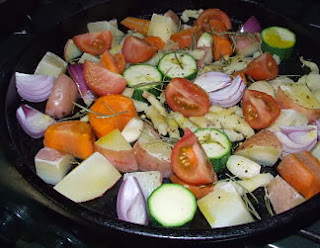.jpg)
.jpg) |
| Young skirret plant |
 |
| One year skirret roots |
 |
| Three year and two year skirret roots |
 |
| Skirret bed |
 |
| Two year skirret roots |
 |
| Skirret offset |
.jpg) |
| Skirret roots - washed but unpeeled |
 |
| Skirret roots amongst vegetables prepared for roasting |
 |
| We had the roast vegetables with rice and veggie sausages. |